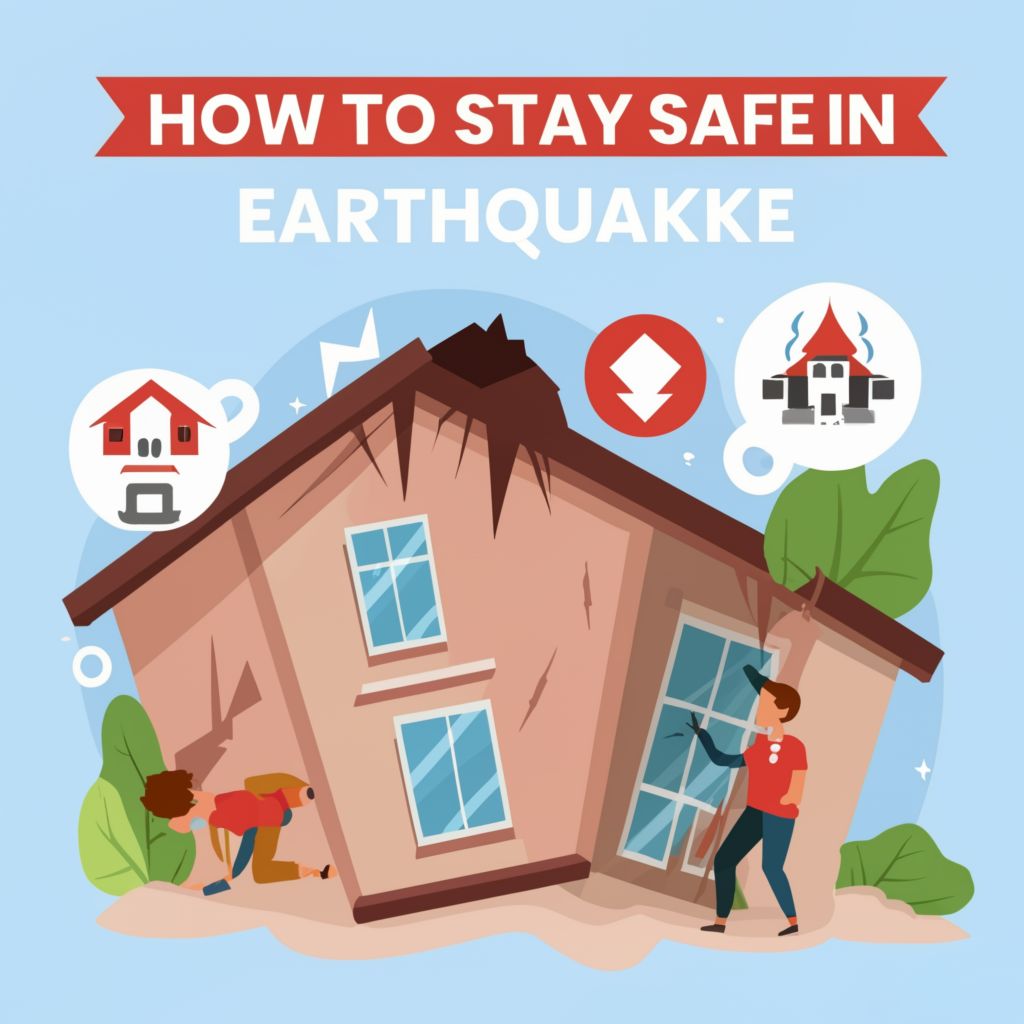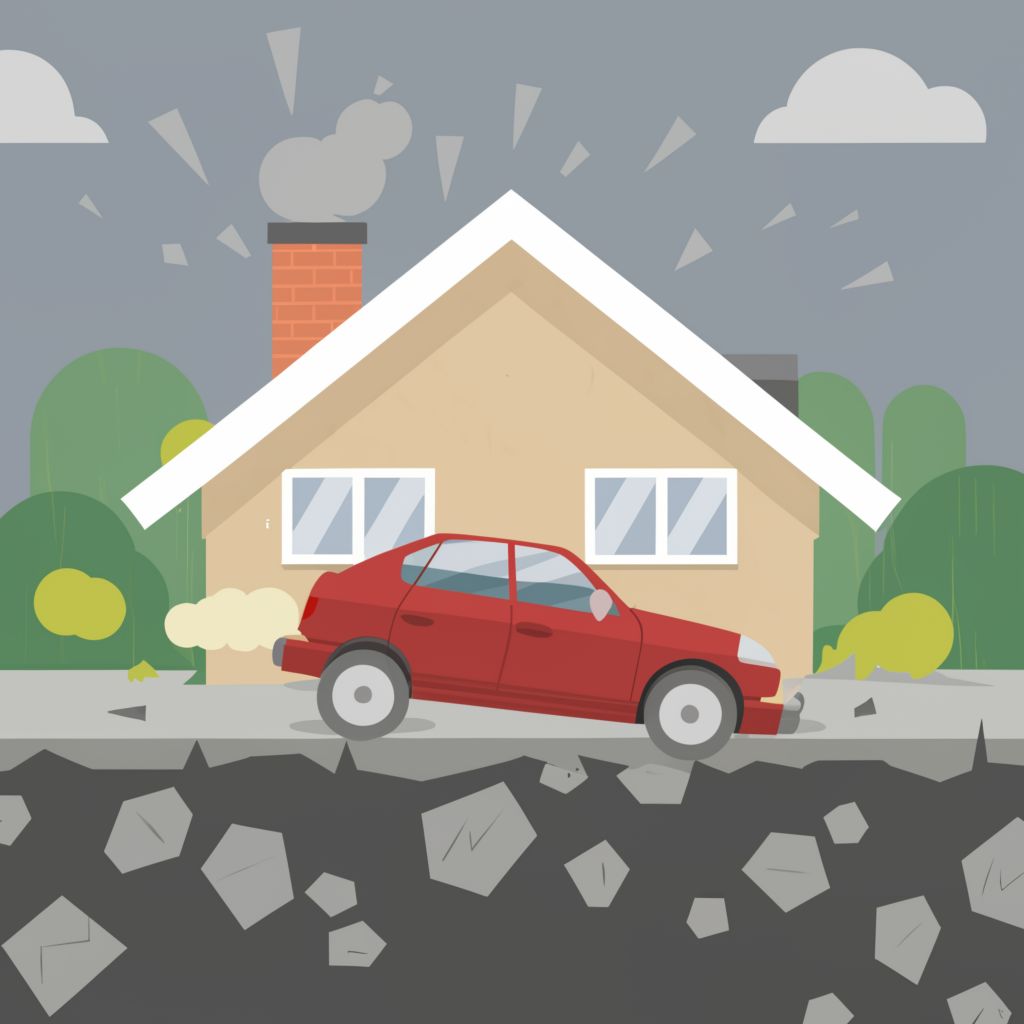
Experience the raw power and intensity of an earthquake like never before! In this article, we delve deep into the seismic force that has shaped our planet for millions of years. An earthquake, a result of tectonic plate movement and the release of built-up energy, is not only a phenomenon of nature but also a sobering reminder of Earth’s constant evolution. From the terrifying ground-shaking to the potential devastation it can cause, understanding earthquakes is essential for our safety and preparedness.
Join us as we explore the mesmerizing science behind earthquakes, uncovering fascinating facts about their origins, classifications, and the incredible scale of their impact. Discover the latest technology used to measure and predict earthquakes, enabling scientists to provide timely warnings and mitigate their destructive consequences. Along the way, we’ll also address common misconceptions and provide practical tips on earthquake safety.
Whether you’re a curious enthusiast or simply seeking to deepen your knowledge, this article will captivate your imagination and leave you with a newfound appreciation for the raw geological forces that shape our planet. So hold on tight as we embark on this seismic journey into the heart of an earthquake.
What Causes Earthquakes?
Earthquakes are the result of the Earth’s tectonic plates constantly moving and colliding with each other. The Earth’s surface is made up of several large and small plates that float on the semi-fluid layer beneath. When these plates interact, they can either slide past each other, collide, or move away from each other. The immense pressure and friction between the plates cause them to stick, and when the built-up stress becomes too much to handle, it is released in the form of an earthquake. These seismic events can vary in intensity and can occur anywhere on Earth, although they are more common in certain regions known as fault lines.
Understanding the causes of earthquakes helps us to appreciate the immense power and energy that lies beneath the Earth’s surface. By studying the movements of tectonic plates, scientists can gain valuable insights into how and why earthquakes occur, ultimately improving our ability to predict and prepare for them.
Understanding the Richter Scale
When it comes to measuring the intensity of earthquakes, the Richter scale is the most commonly used method. Developed by Charles F. Richter in the 1930s, this logarithmic scale assigns a numerical value to quantify the energy released by an earthquake. The scale ranges from 0 to 10, with each whole number increase representing a tenfold increase in ground motion and approximately 31.6 times more energy release.
The Richter scale not only helps scientists classify earthquakes but also provides a basis for understanding their potential impact. A magnitude 2 earthquake, for example, is considered minor and is often not felt by people, while a magnitude 7 earthquake is classified as major and can cause significant damage. By using the Richter scale, scientists can communicate the intensity of an earthquake in a way that is easily understandable to the general public.

The Deadliest Earthquakes in History
Throughout history, the world has witnessed several devastating earthquakes that have left a lasting impact on communities and shaped the course of human civilization. One such earthquake is the Great East Japan Earthquake of 2011, which registered a magnitude of 9.0 and triggered a massive tsunami that caused widespread destruction and claimed thousands of lives. This tragic event serves as a reminder of the unpredictable and destructive nature of earthquakes.
Other notable earthquakes include the 1906 San Francisco earthquake, which resulted in the loss of an estimated 3,000 lives and caused extensive damage to the city. The 2010 earthquake in Haiti, with a magnitude of 7.0, is another example of a devastating earthquake that resulted in the deaths of over 230,000 people and left millions homeless.
How to Stay Safe During an Earthquake
While earthquakes cannot be prevented, there are steps that individuals and communities can take to stay safe during these seismic events. The key to surviving an earthquake is being prepared and knowing how to react when the ground starts to shake.
First and foremost, it’s important to create a plan with your family or household members. This plan should include identifying safe spots in your home or workplace, such as under sturdy furniture or against an interior wall, and establishing a communication plan to connect with loved ones after the earthquake.
During an earthquake, it’s crucial to drop, cover, and hold on. Drop to the ground to prevent being knocked over, take cover under a sturdy piece of furniture, and hold on until the shaking stops. Avoid doorways and windows as they can be dangerous during an earthquake.
After the shaking stops, be cautious of potential aftershocks. These are smaller earthquakes that can occur in the hours or days after the main event. Check for injuries and damage, and be prepared to evacuate if necessary. Having an emergency kit with essential supplies, such as food, water, and a first aid kit, is also crucial for staying safe during and after an earthquake.
Earthquake Preparedness Kits
Earthquake preparedness kits are essential for ensuring the safety and well-being of individuals and families during times of seismic activity. These kits should contain essential items that can help sustain individuals for at least 72 hours following an earthquake.
Some of the key items to include in an earthquake preparedness kit are:
- Water: Store at least one gallon of water per person per day, for drinking and sanitation purposes.
- Non-perishable food: Stock up on canned goods, energy bars, and other non-perishable food items that can provide sustenance during an emergency.
- First aid kit: Include essential medical supplies such as bandages, antiseptics, pain relievers, and any necessary prescription medications.
- Flashlights and batteries: Ensure you have a reliable light source in case of power outages.
- Emergency blankets: These can provide warmth in case of exposure to cold temperatures.
- Whistle: Use a whistle to signal for help if you become trapped or need assistance.
- Portable radio: Stay informed about the latest updates and emergency instructions by having a battery-powered or hand-crank radio.
- Personal hygiene items: Include items such as toilet paper, hand sanitizer, and feminine hygiene products.
- Cash: Keep a small amount of cash on hand, as ATMs may not be functional during an earthquake.
- Important documents: Store copies of important documents, such as identification cards, insurance policies, and medical records, in a waterproof and portable container.
By having a well-stocked earthquake preparedness kit, individuals can minimize the impact of an earthquake and increase their chances of survival in the aftermath.
Early Warning Systems for Earthquakes
Advancements in technology have allowed scientists to develop early warning systems that can detect seismic activity and provide timely alerts before the shaking reaches a specific area. These systems rely on a network of sensors strategically placed near fault lines to monitor ground motion and detect earthquakes in their early stages.
When an earthquake is detected, the data is analyzed, and alerts are sent to regions that are expected to experience shaking. These alerts can provide valuable seconds to minutes of warning, allowing individuals to take cover, shut down critical systems, and evacuate if necessary.
Early warning systems have been successfully implemented in countries such as Japan, Mexico, and parts of the United States, and have proven to be effective in reducing casualties and damage. As technology continues to advance, early warning systems are expected to become even more accurate and widespread, further enhancing our ability to prepare for and respond to earthquakes.
The Science Behind Earthquake Prediction
Despite significant advancements in technology, accurately predicting earthquakes remains a challenging task for scientists. Earthquakes are complex natural phenomena that involve a multitude of factors, making it difficult to pinpoint when and where they will occur.
However, scientists have made progress in identifying patterns and precursor events that can indicate an increased likelihood of an earthquake. These precursors include changes in ground water levels, electromagnetic signals, and animal behavior, among others. By monitoring these precursors, scientists can gain insights into the potential for seismic activity and issue alerts accordingly.
It’s important to note that earthquake prediction is still an ongoing area of research, and there is currently no foolproof method for predicting earthquakes with complete accuracy. However, advancements in monitoring technology and data analysis continue to push the boundaries of our understanding, bringing us closer to the goal of reliable earthquake prediction.
The Impact of Earthquakes on the Environment
Earthquakes have a profound impact on the environment, causing both immediate and long-term changes to the Earth’s surface. The ground shaking can lead to landslides, soil liquefaction, and the formation of new faults. These geological changes can alter landscapes, disrupt ecosystems, and impact the availability of natural resources.
One notable environmental impact of earthquakes is the potential for tsunamis. When an earthquake occurs beneath the ocean floor, it can trigger a series of powerful ocean waves that can travel across vast distances. These tsunamis can cause widespread destruction along coastlines and pose a significant threat to coastal communities.
In addition to the immediate impact, earthquakes can also have long-term consequences for the environment. For example, the loss of vegetation due to landslides can lead to soil erosion and impact local ecosystems. The displacement of tectonic plates can also affect the distribution of resources such as groundwater, further impacting the environment and human populations.
Rebuilding After an Earthquake
After the dust settles and the immediate danger has passed, communities affected by earthquakes face the daunting task of rebuilding. The process of rebuilding after an earthquake involves not only repairing damaged structures but also addressing the social, economic, and psychological impacts on the affected population.
Efforts to rebuild after an earthquake often require a collaborative approach involving various stakeholders, including government agencies, non-profit organizations, and the local community. The focus is not only on restoring physical infrastructure but also on creating more resilient communities that can withstand future seismic events.
In the aftermath of an earthquake, architects and engineers play a crucial role in designing and constructing buildings that are more resistant to seismic forces. Building codes and regulations are updated to incorporate lessons learned from past earthquakes, ensuring that new structures are better equipped to withstand ground shaking.
Rebuilding after an earthquake is a complex and time-consuming process, but by incorporating best practices and lessons learned, communities can emerge stronger and more prepared for future seismic events.
Conclusion: The Importance of Earthquake Awareness and Preparedness
Earthquakes are a natural part of our planet’s ongoing evolution, and understanding their causes, impact, and prediction is crucial for our safety and preparedness. Through advancements in technology, scientists have made significant strides in measuring and predicting earthquakes, providing valuable insights that can help us mitigate their destructive consequences.
Staying safe during an earthquake requires preparedness, including creating an emergency plan, having essential supplies, and knowing how to react when the ground starts to shake. Early warning systems have proven to be effective in providing timely alerts, giving individuals and communities precious seconds to take life-saving actions.
It’s also important to recognize the environmental impact of earthquakes and the long-term consequences they can have on ecosystems and communities. Rebuilding after an earthquake requires a comprehensive approach that considers both physical infrastructure and the social fabric of affected communities.
By increasing earthquake awareness and preparedness, we can minimize the impact of these natural disasters and create safer, more resilient communities. So let’s continue to learn, adapt, and work together to navigate the seismic journey into the heart of an earthquake.



